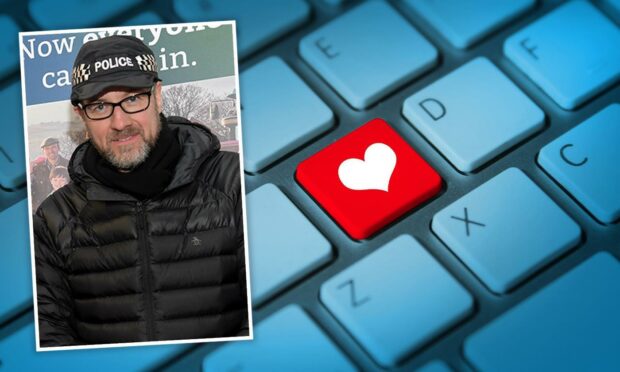According to a recent report by Which?, reports of romance fraud across the UK increased by 40% last year, with £73.9m lost during that period – and experts expect this trend to continue in 2022.
Many believe the figure is much higher, with many people simply too embarrassed to admit they have been scammed.
The loneliness and isolation brought about by lockdowns mean more people are looking to make romantic connections online.
These scams regularly involve some form of ‘catfishing’ – the act of luring someone into a relationship by constructing a fictional online persona.
This is where the intended victim is befriended on the internet and eventually convinced to assist their new love financially by sending them money.
Dating sites and social media platforms such as Facebook and Instagram are two of many hunting grounds used by romance fraudsters.
A common tactic is to pretend to have a job that requires long periods of travel, for example a nurse working overseas, someone in the armed forces, or an offshore worker.
Romance fraudsters are patient – they might groom victims for months before they attempt to steal their money, having built a relationship and established trust.
Unlike with most frauds, the victim might initially feel like they’re in control and in a position of relative power, as romance fraudsters will typically pitch themselves as vulnerable or in need of help.
They often ask for help for an issue with a visa, health problems or flight tickets.
Victims are typically convinced to make multiple payments to assist.
Despite their underhand tactics, there are ways you can protect yourself:
- Stay on site, keep all communication on the dating website you are using.
- Don’t be convinced by profile pictures, they may have been taken from somewhere else on the internet. You can check photos using a reverse image search on the internet through websites like TinEye or Reverse Image Search.
- Do your own research on the person, are they members of any other social networking sites? Can you confirm what they are telling you about themselves, where they work or where they live?
- Never send money to someone you have not met in person and be extremely wary of giving money to someone you have recently met, particularly if you have only recently started a relationship with them.
- Be wary of anyone asking you to receive money on their behalf and transferring it on. They may be using you to launder money.
- Talk to family and friends for advice, even if the other party is asking you to keep the relationship secret
More advice can be found on our website here
And most importantly – don’t be embarrassed or reluctant to report any incidents to us or your bank, we are all here to help.
